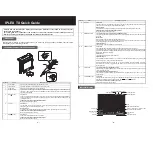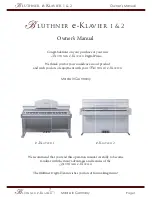
Asra Curve User Guide V9
27/05/2021
Page
31
of
40
11.
.
Factors which affect absolute accuracy
Measurement accuracy and repeatability will depend on the following:-
Calibration:
Please refer Technical Specification given on page
Temperature:
Use equipment in controlled conditions, please refer
to Technical Specification given on page
External noise
Use equipment in an environment which limits
external noise to the minimum.
The basic headset provides very little attenuation of
external noise.
Audiocups fitted to the headset improves the
situation, particularly for higher frequencies and a
booth also improves attenuation but particularly for
low frequencies.
Refer to BS EN ISO 8253-1:2010 for details on
acceptable test environments.
Headset positioning
Remove glasses, ear rings etc.
Place the headset so it sits comfortably on the head,
with the headband adjusted for best fit.
Patient cooperation:
Advise the patient to press and release the button as
soon as they hear the tone. A familiarisation facility is
available
when using the “Single” test
button.
12.
Maintenance / Technical Information
The Asra audiometer should have its calibration checked each day using a bio-simulator box
(artificial ear) or by testing someone whose hearing levels are known, on at least 3 frequencies
on each ear. In addition to this the cables should be inspected regularly for signs of damage, in
particular in the region of the response button and where the cables approach the headset.
13.
Calibration
Annual calibration should be performed by an approved supplier, who has access to the ASRA
Curve calibration software and whose equipment has been calibrated to traceable standards.










































